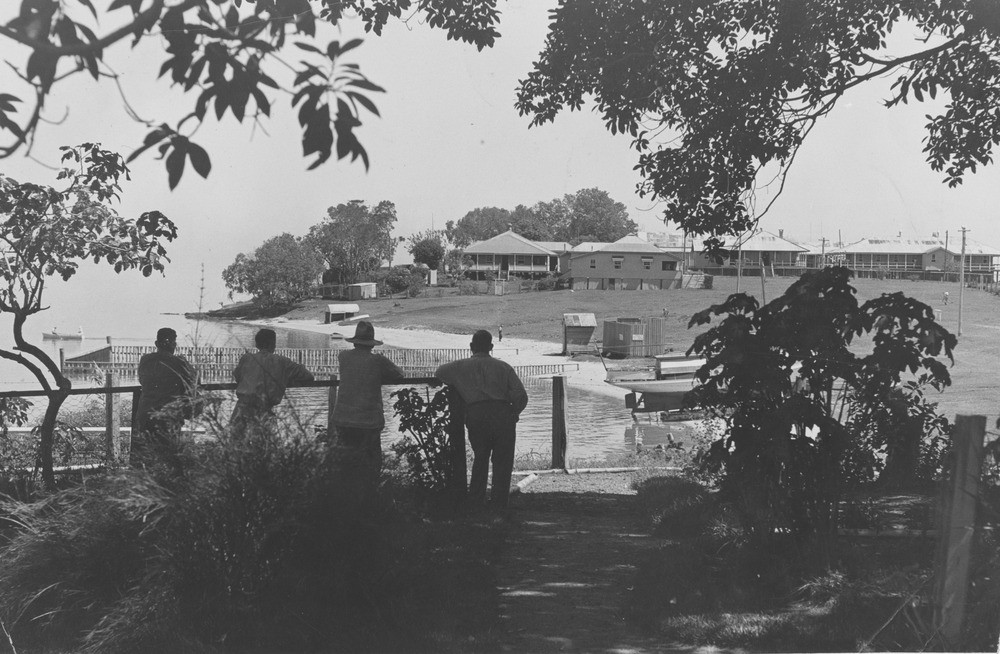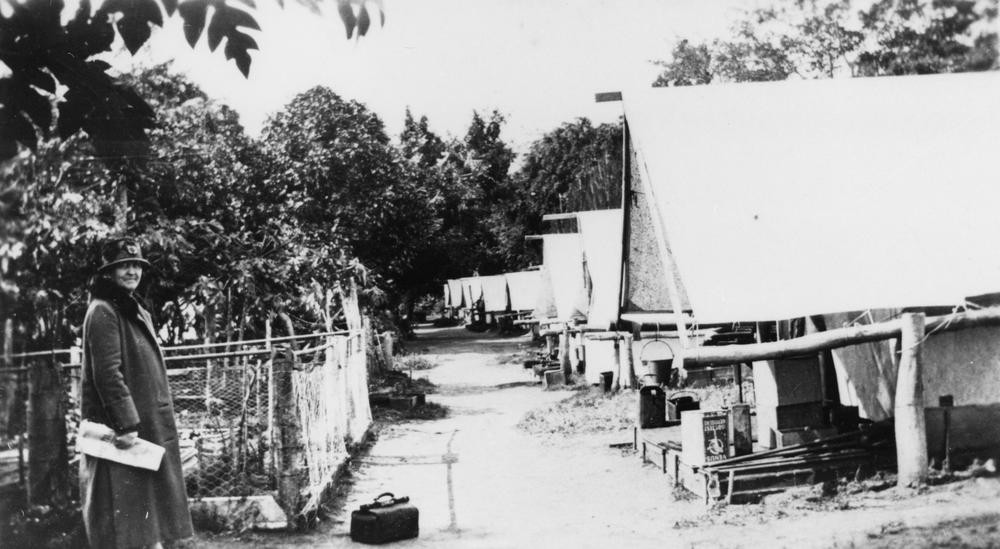Guest blogger: Lisa Jackson - Q Anzac 100 Fellow.
Beneath the green lawns and bunya pines of the Dunwich cemetery on North Stradbroke Island, at least 65 servicemen who fought in the First World War are buried. Most are in graves whose iron gravemarkers were long ago lost. How did they come to be there?

The graves belong mostly to the shell-shocked and war-traumatised soldiers who had been inmates at the Dunwich Benevolent Asylum. The Asylum had been established in 1865 to house and care for people who were unable to provide for themselves – the poor and destitute, the disabled, diseased, the old and infirm, and in some cases, those with untreated mental illness. It was a major institution, with over 1,100 inmates at the turn of the century.
Within the Asylum, the Dunwich Inebriate Institution had been established to manage alcoholics. “Inebriates” found drunk on the streets of Brisbane and country towns could be sentenced by a magistrate to serve a period of time in Dunwich, to be “treated” for their condition, or people could refer themselves to the Institution voluntarily. For a few years the Inebriate Institution had operated on Peel Island, but it was moved back to Dunwich just as men started returning from war.
Over 450 men who had returned from fighting overseas spent time at Dunwich. At least 220 of these were admitted as “inebriates”.
Dunwich was portrayed as a place where returned servicemen would be offered appropriate treatment for their alcoholism. For those suffering from shell shock, or from war-caused injuries affecting their employment prospects, the Island environment offered “sea air”, space for quietness and contemplation, companionship, rest and good food. In the case of ex-soldier Joseph Slack, a concerned friend wrote on his behalf to the Repat:
"...the Medical Officer advised him to go to a 'Home for Soldiers' at Dunwich, where there were nurses and doctors, plenty of fishing etc, and three months holidays there would set him up again." 1
Another ex-soldier John Kelly told his doctor he was “…trying to get into the Dunwich Benevolent Home, where he hoped he would be able to pull himself together."
The day-to-day life for the soldier inmates in Dunwich was basic. The men were housed in large dormitory-style rooms, took their meals in the communal Mess Hall, and amused themselves fishing, in the library or taking advantage of the meagre entertainments available. When beds in the “Soldier’s Ward” were filled, men were accommodated in the Top Tents, a row of individual semi-permanent shelters where inmates could enjoy a bit of privacy and perhaps grow a few vegetables and cook for themselves over an open fire. Even then it didn’t suit everybody, with one soldier telling the Repat "that the last week he spent in Dunwich was the worst week he spent in his life…” 2

A majority of the soldiers admitted to the Asylum or the Inebriate Institution were single, with limited or no family support. Many were itinerant – travelling around country areas looking for whatever work they could find. Invariably – they were broke. Inebriate ex-soldiers had a harder time than others in securing a service pension. The Repatriation Commission (the Repat) – the Federal Government agency responsible for providing financial sustenance for a returned servicemen - refused to accept alcoholism as a war-related condition. Ex-soldiers who fronted up for a six-monthly medical check showing any evidence of drinking had their pensions cut or even cancelled.
The case of Robert Teare is a typical example. His Repat file notes that he "cannot keep job owing to nerves breaking down". 3 However, the Repat declined his application for a pension as early as April 1918, despite repeated hospitalisation for shell-shock, because “his condition is accentuated by overindulgence in alcohol.” He was admitted to the Inebriate Institution at least eight times, but never received a service pension because his “present condition is due to post-war causes”.
From as early as 1918, there was considerable public debate about the treatment of the returned servicemen at Dunwich, with concerns raised about the quality of the medical care, the standard of accommodation and the food:
“… how very depressing it is for these brave returned heroes, suffering from shell shock, etc., to see the open graves, the funerals, the miserable wreck of humanity. Surely with all their faults, those who have so nobly fought for us deserve better treatment than this.” 4
An inquiry conducted by the Returned Sailors and Soldiers Imperial League of Australia in 1918 found that the Inebriate Institution was not a suitable place for the returned servicemen, most of whom had entered voluntarily:
“It is alleged that it was represented to them that they were being sent to a place where the food and the facilities of Sport and Recreation would enable them to repair damage which has been done to their nervous system by the strain of active service. These men do not seem Inebriates in the ordinary sense of the term, but it is to be remembered that the shell shock and the experiences of men who have undergone a long spell of fighting brings their nervous system into such a state that a slight indulgence in Alcohol or any undue excitement or strain effects them immediately.” 5
Despite recommendations that a dedicated soldier’s facility be established, it never eventuated. Hundreds of returned servicemen spent years travelling around Queensland looking for work, or moving between hostels set up by organisations such as the Red Cross and the YMCA to provide medical care, housing and support. The Asylum re-admitted many inmates multiple times, over decades.
By 1924 there was little practical difference in the treatment of ordinary inmates and inebriates at Dunwich. World War One soldiers continued to be admitted to the Asylum right up until its closure in 1946, when moved to Eventide at Sandgate, leaving behind over 8500 inmates buried in the Dunwich Cemetery. The soldiers from the First World War buried in the Dunwich cemetery are a reminder of our poor understanding of the lingering effects of war trauma.
References
1 Letter from S. Parkinson to Senator W. Reid October 1918 re returned soldier Joseph Slack. Queensland State Archives Item ID. 18242
2 Arthur Rogers, NAA Repat record
3 Robert Teare, NAA Repat record
4 Letter from S. Parkinson to Senator W. Reid October 1918 re returned soldier Joseph Slack. Queensland State Archives Item ID. 18242
5 Dunwich Report – stamped Nov 6 1918 - Queensland State Archives Item ID18242, Batch file
Lisa Jackson, Q ANZAC 100 Fellow
Comments
Your email address will not be published.
We welcome relevant, respectful comments.